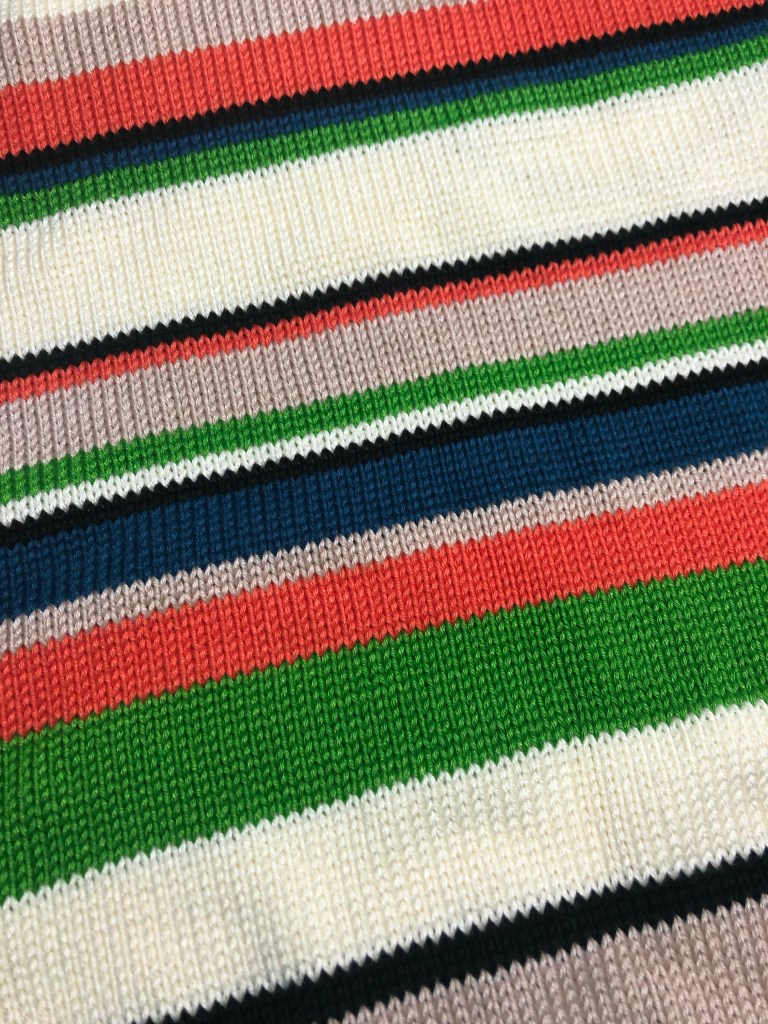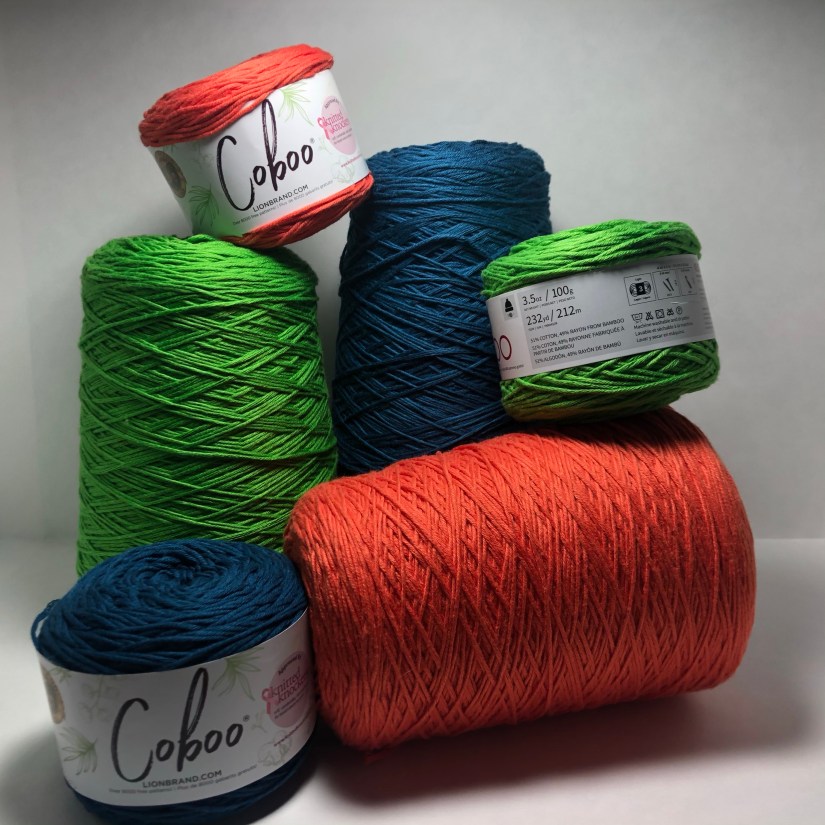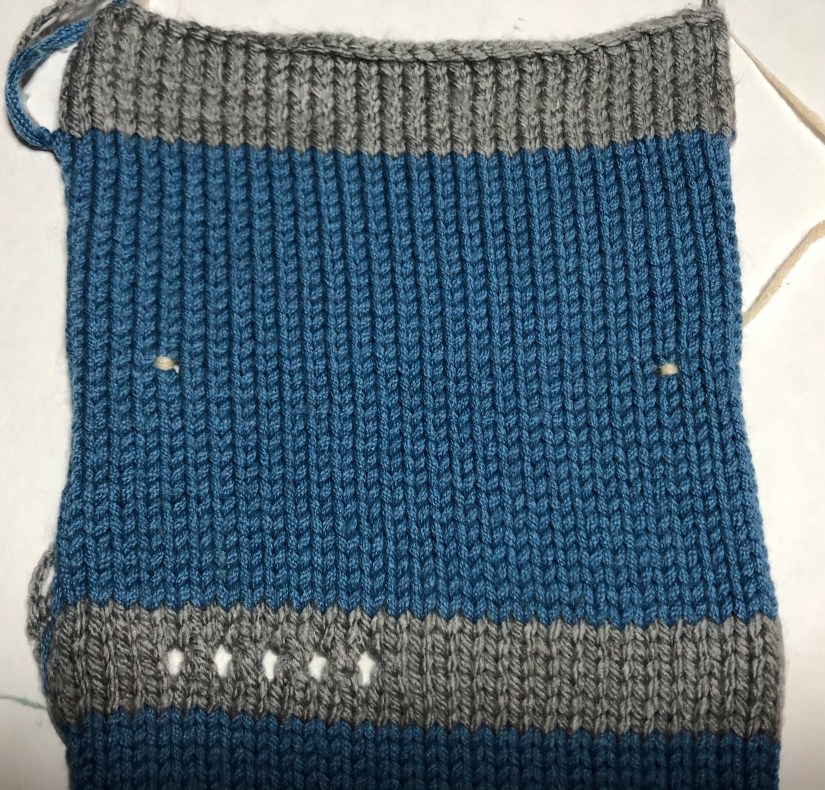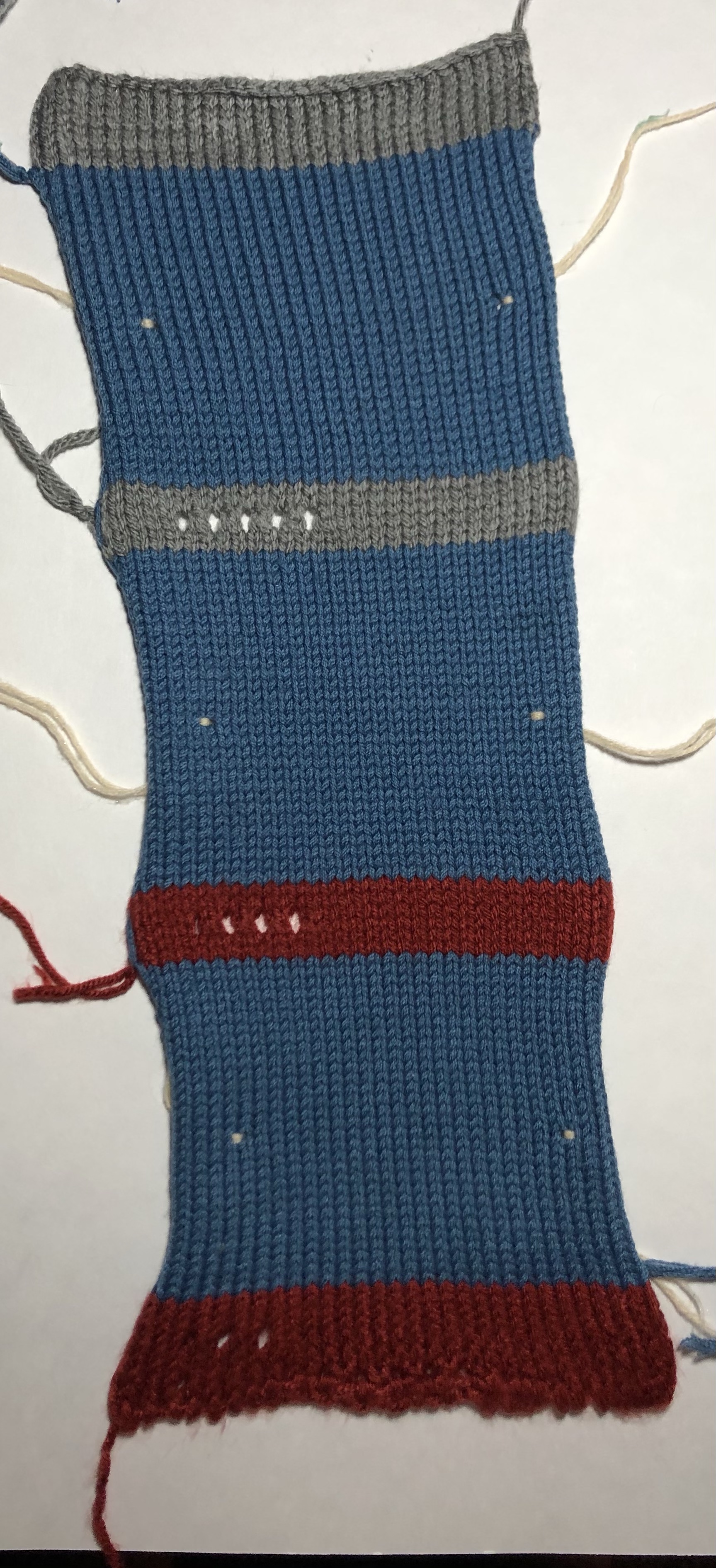Lion Brand Yarns are commonly found at big box general stores and big box craft stores. You can easily browse their selection on their website, which also features free patterns. The price you see on Lion Brand’s website might not be what you pay in stores, especially since big craft stores like Michael’s and JoAnn regularly run yarn specials and feature coupons with up to 40% off.
I used five or six different Lion Brand yarns over a decade ago as a beginning hand knitter and didn’t really care for them, so I moved on. Recently, Lion Brand bought luxury coned yarn company Silk City Fibers (see my review of their Cotton Bambu yarn in this post), so I decided to order a variety of yarns from the Lion Brand website to give them another try.
They now have many different fiber types and blends from wool to yak fiber along with recycled fibers and an eco-friendly cotton version. Their selection has really widened and diversified compared to what they had when I considered them just a cheap yarn company back as a beginner.
Acrylic yarn is what I think of when I think of Lion Brand, so I decided to give one of their acrylic multicolor yarns a try first. Here’s the scoop on
All opinions are honest and my own. I am not affiliated with any company or individual mentioned or linked unless otherwise noted. I purchased this yarn myself and did not receive compensation for this review.

About Lion Brand Ice Cream
| Fiber Content | 100% Acrylic |
| Yardage | 394 or 1117 |
| Ounces | 3.5 or 10 |
| Yarn Weight | 3 / Light / DK |
| Made in | Turkey |
| Availability | Online, Big box craft stores |
| Put up | skein |
Lion Brand Ice Cream comes in two skein sizes, 394 yards for $4.99 MSRP and “Big Scoop” at 1117 yards for $13.49. The smaller size comes in 20 multicolor varieties while Big Scoop comes in 22. The colorways remind me of Dippin’ Dots flavors, and reading the names while hungry is not a good idea!
If you don’t feel like doing the math, that’s about $0.01 per yard at MSRP, and you can frequently find skeins for less at stores like Walmart and JoAnn. If you’re looking for an inexpensive and colorful project, this could be the yarn for you.
Care Guide
| Hand Wash | Yes | |
| Machine Wash | Yes | |
| Flat Dry | Yes | |
| Machine Dry | Yes |
When it comes to ease of care, it’s hard to beat this yarn. Throw it in the wash with whatever you happen to be washing that time, and the yarn can take it, but don’t iron it or steam it excessively unless you mean to kill the acrylic.
The yarn really softens up in the wash and achieves a bit of drape. I have not used this yarn enough to comment extensively on longer-term wear, but I could see pills forming readily by the fuzz it gained in the wash along with the pills already present in the skein when I wound it into a cake to work with it.

Knitting Machine Compatibility
| 4.5mm Standard Gauge | Yes, But* | |
| 6.5mm Mid-Gauge | Yes | |
| 8mm / 9mm Bulky Gauge | Yes |
This yarn can work at upper tensions on standard gauge machines, but they may not be happy about it. It is much more appropriate for mid-gauge machines or bulky gauge at lower tensions.
Swatches, Performance, and Blocking
If you’re curious about how I swatch yarn, please read this post.
It was not a pleasant experience to use Lion Brand Ice Cream on my standard gauge Brother KH-890. My machine didn’t struggle, but knitting with this yarn did not flow like a nicer, smoother yarn would have. My machine did not behave itself at all when I started trying to knit a tuck stitch with a punch card, and after troubleshooting weights, yarn feed, sponge bar, bent needles, and everything else I could think of, I think I have to blame the yarn.
Ice Cream is slightly fuzzy, and my skein came with pre-made pills that liked to catch on the needles. The yarn is not slick, yet it is not scratchy like acrylic “grandma yarns” from years ago or extremely cheap Red Heart acrylic yarn you can find at Walmart. It sits somewhere in the middle that you can be pleased with when you consider its affordability.
All those standard gauge issues aside, Ice Cream worked just fine on the mid-gauge SilverReed LK-150 and Bulky KH-260. I did experience issues with pills catching things occasionally, but for the most part, I didn’t notice any substantial issues.
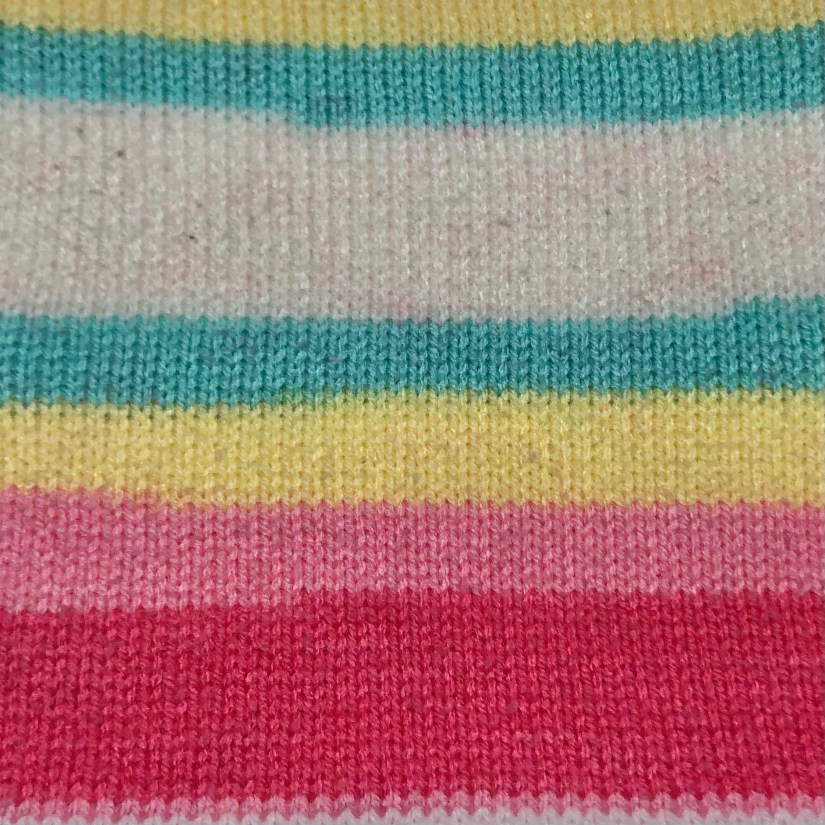
Standard-gauge Brother KH-890 stockinette stitch swatch at Tension 10, washed cold on gentle, dried on low*, and gently steamed:
| Before | After | |
| 40 stitches | 6.25″ | 6.5″ |
| 60 rows | 7.25″ | 6.75″ |
*This yarn can be washed and dried at much hotter temperatures, but I throw my swatches in with whatever loads need to be done unless they have special care requirements.
I noticed about an half inch of vertical/row shrinkage on my swatch, but I did have some growth stitch-wise/horizontally. Since many of my test yarns and swatches shrink vertically in the wash, I suspect it could have something to do with how I set my stitches after knitting them, so I’ll be sure to test that at a future date.
Ice Cream makes a pleasant fabric. My swatch had a decent amount of drape in it from washing and drying alone.
Pattern Ideas
The gentle colors of this yarn and the easy care scream “baby gifts” to me. I think this yarn is a great choice when making items to gift to busy parents-to-be. Who wants to read a care label when the baby is crying?
I originally planned to feature a tuck baby blanket in this post, but since my standard gauge machine does NOT like this yarn when patterning, I’ll feature the problem swatch, oddly flat honeycomb bubble rows and all, and save the blanket for a future pattern post when repair parts for a bulky gauge machine I’m restoring arrive next month.

If you want to make something similar, use Brother Card 2M, knit tuck for four rows and then knit plain stockinette for two rows.
Comparable Yarn
The Bernat Baby Sport line features another DK weight yarn at the same $0.01 per yard cost. Bernat Baby Sport is about as equally available at big box stores, and you’ll find more colors overall with solids, ombres, and sparkles. Bernat Baby Sport is another “just throw it in the wash and forget it” yarn, and it is slightly smoother with less fuzz than Lion Brand Ice Cream.
Final Thoughts
When it comes to Lion Brand, this yarn is almost exactly what my past self expected from them: cheap acrylic yarn. However, this is a pretty decent cheap acrylic yarn with a collection of adorable colorways. The ice cream themed names and colors are very satisfying.
If you’re making a baby gift, I think this is a good choice. As far as budget baby yarns go, this one ranks high up on my list.
I’m at the age where my friends are having kids, and when I ask them what they’d like, “something easy to take care of” is always the answer, even friends who have been more than willing to hand wash an item in the past. There are a few singletons and a set of twins in family friends’ futures, and one of them will receive a gift crafted from this adorably dyed yarn.
As a (former?) yarn snob, I don’t know if any more Lion Brand Ice Cream is in my future. I just don’t seek out budget yarns like I used to as a poor college student, and I like to search for unusual or uncommon fiber content. I really like to work with my standard gauge machine, and she did not care for this yarn. When you get down to it, Ice Cream is still a cheap budget yarn.
Overall, I give Lion Brand Ice Cream a middle of the road 2.5/5. It’s a good value with cute colorways.
Have you used Lion Brand Ice Cream before in your machine knitting? What about in your hand knitting or crochet? What kind of projects did you use it for, and what did you think of its performance?
Are there other properties or categories you think I should include in my yarn reviews? What yarn should I review next? Let me know in the comments!



